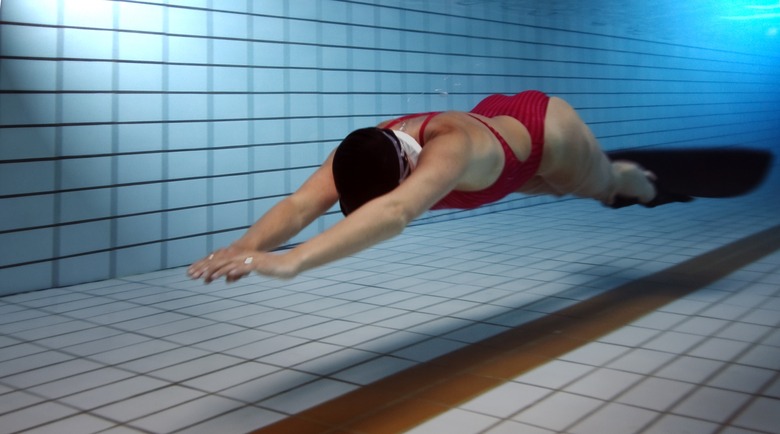How To Use Swimming Pool Clarifiers
Using a pool clarifier is one solution you can try when your swimming pool water is murky and cloudy, and when other methods do not seem to work.
Pool clarifiers are commercial products that contain polymers that act as coagulants on foreign particles suspended in the water. In scientific terms, a clarifier adds positively charged ions to the water, which are attracted to the negative charge in suspended particles, thereby causing them to form larger clumps that can then be filtered out by the pool's filter system.
Before using a clarifier, though, it's important to make sure there is not another reason for the pool's cloudiness. Although the clarifier can clear up the water quickly, it's important to correct any underlying problem to prevent it from occurring in the future so your pool water stays clean.
Why Pool Water Becomes Cloudy
Why Pool Water Becomes Cloudy
Quite simply, pool water becomes cloudy when there is some type of undissolved contaminant, such as algae or oils, in the water that is dense enough to prevent light from passing through. It can be caused by a number of things that should be checked and corrected:
- Improper filtration. If pool water becomes cloudy, it can be a simple matter of running your pool filter system more often. Normally, your filter should be running at least eight hours a day; if this doesn't keep your pool water clear, try running it for 10 or 12 hours.
- Filter needs backwashing. Periodically, the filter system needs to be backwashed to remove debris that may be clogging it.
- The pH is too high or too low. Improper pH can cause cloudiness, which is often the result of chemistry out of balance. Alkalinity that is too high is especially likely to cause cloudiness.
- Not enough sanitizer. Check chlorine or bromine levels regularly to make sure they are at the correct level. If they're not sufficient, algae growth may cause cloudiness.
If you are confident that these possible causes have been ruled out or fixed, but you still have problems with cloudy water, then it's time to use a water clarifier product.
Types of Clarifiers
Types of Clarifiers
There are several types of clarifier products available. Most are effective, but some may show better results with certain causes of cloudiness. If the first clarifier you try doesn't work, it may be worth trying another.
- PolyDADMAC. This is the most common type of clarifier, an ammonium chloride that has a highly positive charge. It works for nearly any negatively charged suspended particle. It is often the best first choice.
- Enzyme products are positively charged particles that actually consume suspended material. These are especially good for clearing water of oils and organics.
- Polyacrylamines (PAM). These products are sold as gels or cubes. They are long-lasting, but may clog cartridge or DE filters.
- Aluminum sulfate (often simply called alum) is used as a flocculant — a clarifier intended to remove the really heavy particles, causing them to bond and sink to the floor of the pool, where they can be vacuumed up.
- Blended clarifiers. These are formulations that contain all of the above types. These are broad spectrum clarifiers that address several causes at once.
Tip
If you have a diatomaceous earth filter, you cannot use most clarifiers. Read the package labels to make sure the clarifier product is appropriate for your type of filter.
How to Use a Clarifier
How to Use a Clarifier
Different types of clarifiers may carry slightly different instructions, but most work with the following procedure:
- Run your swimming pool filter system for 24 to 48 hours. If the pool is still cloudy, then continue with the next step.
- Add the correct amount of clarifier into your swimming pool according to the package directions. Quantities will depend on the water capacity of your pool.
- Allow your pool to sit unused with the filter system running overnight. This should allow the clarifier to clump the particulates together and allow the filter system to remove most of them.
- Vacuum out any clumped particles on the bottom of the pool that the filter did not remove. Keep the filter running as you vacuum to remove any pieces that break off while vacuuming.
- Test your swimming pool water for pool chemical levels. When the pool levels are back to normal, the pool is safe for swimming.
